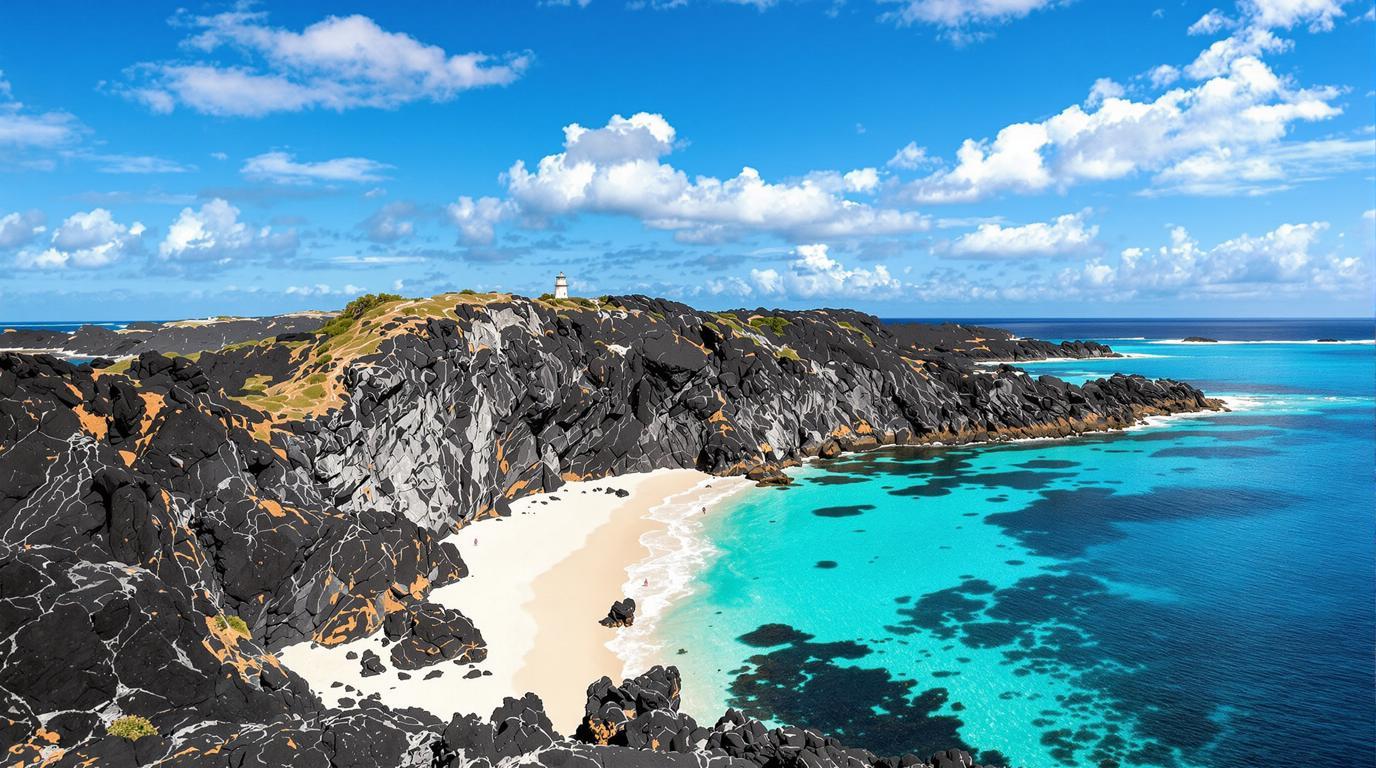# This Tiny Atlantic Island Just 2km From Shore Requires Permits But Rewards Visitors With Empty Turquoise Beaches
The midday sun casts diamond fragments across the water as my ferry approaches Isla de Lobos. Just visible through the salt spray, a perfect crescent of white sand curves against black volcanic rock—an empty beach on an almost-empty island. “People come seeking Fuerteventura’s beaches,” whispers Miguel, the weathered ferryman beside me, “but locals know the real magic lies here, where the silence speaks louder than the waves.”
This diminutive volcanic gem, barely 4.6 square kilometers, floats in the Atlantic just 2km north of Fuerteventura in Spain’s Canary Islands. Once home to monk seals (the “lobos marinos” that gave the island its name), today it houses only a lighthouse keeper and the ghosts of fishermen who once inhabited El Puertito, a hamlet of whitewashed stone houses that appears mirage-like against the stark landscape. Protected as a UNESCO Biosphere Reserve since 2009, Lobos has become a sanctuary where nature reigns supreme—a status that demands respect from its visitors.
That respect materializes as a daily visitor cap of just 200 people and a permit system that’s both blessing and challenge. The free permits (reserved online five days in advance) grant four-hour windows to explore this untamed wilderness. The system has preserved something increasingly rare in the Canaries: genuine solitude among extraordinary beauty.
At La Concha Beach, a shell-shaped cove with waters so clear they appear digitally enhanced, I wade through shallows teeming with zebra-striped sea bream. Unlike the crowded shores of Cancún’s nearby islands with their famed turquoise waters, here I count just seven other people scattered across the sand. The volcanic headland provides natural windbreaks, creating pools warm enough for extended snorkeling without crowds disturbing the marine life.
A 40-minute hike from the ferry landing, following a trail of volcanic scree, leads to Faro de Punta Martiño. This 19th-century lighthouse stands sentinel on the island’s northeastern tip. Unlike most tourist lighthouses, no souvenir shops or cafés mar the experience—just panoramic views across to Lanzarote’s rusty volcanoes and the opportunity to spot Eleonora’s falcons riding thermals above the cliffs. “Those birds travel from Madagascar each year to nest here,” explains Carmen, a local ornithologist conducting surveys. “They’re like the lighthouse—quiet observers of an island that changes little while the world transforms.”
Lunchtime brings me to El Puertito’s lone restaurant, where Sebastián has been serving the day’s catch for three decades. His caldero de pescado—a rust-colored fish stew fortified with local potatoes and fragrant with saffron—comes with thick slices of bread for soaking up the broth. “My grandfather taught me this recipe,” Sebastián says, “when fishermen still lived here year-round. Now I’m the only one who makes it the old way.” The simplicity belies its depth—like the island itself, there’s complexity beneath the unassuming surface.
The best time to visit is April through June, when wildflowers carpet the volcanic soil and the Atlantic winds soften. Book the first morning ferry (departures from Corralejo harbor at 10am) and the last return (4pm) to maximize your permitted time. For accommodation, the boutique Hotel El Cabo in Corralejo provides harbor views and easy access to the ferry terminal. As my boat pulls away from Lobos, I understand why community-owned island paradises like this are increasingly precious—places where permits and patience unlock experiences that mass tourism cannot purchase.
